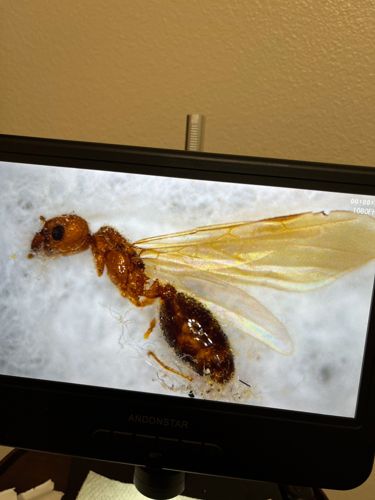Winged Ant (Queen or Male Alate)
Scientific Name: Formicidae (many possible genera and species)
Order & Family: Order: Hymenoptera, Family: Formicidae
Size: Typically 2-20 mm, depending on the species and caste (winged reproductives are often larger than workers).

Natural Habitat
Ants are found in almost all terrestrial habitats worldwide, from forests and grasslands to urban environments. They build nests in soil, wood, under rocks, or within structures.
Diet & Feeding
Ants have diverse diets depending on the species. Many are omnivores, feeding on sugars (nectar, honeydew), proteins (other insects, dead animals), and fats. The specific diet varies greatly among ant species.
Behavior Patterns
Winged reproductive ants (alates) emerge from nests during mating flights, often after rain, to find mates and establish new colonies. Once a queen mates, she typically sheds her wings and seeks a suitable nesting site. The workers are responsible for foraging, caring for the brood, and colony maintenance.
Risks & Benefits
Risks: Some ant species can be pests, invading homes and pantries, contaminating food, or causing structural damage (e.g., carpenter ants). Some can deliver painful stings or bites (e.g., fire ants). Benefits: Ants are important in ecosystems as decomposers, predators of other insects, seed dispersers, and soil aerators. They play a significant role in nutrient cycling.
Identified on: 9/3/2025